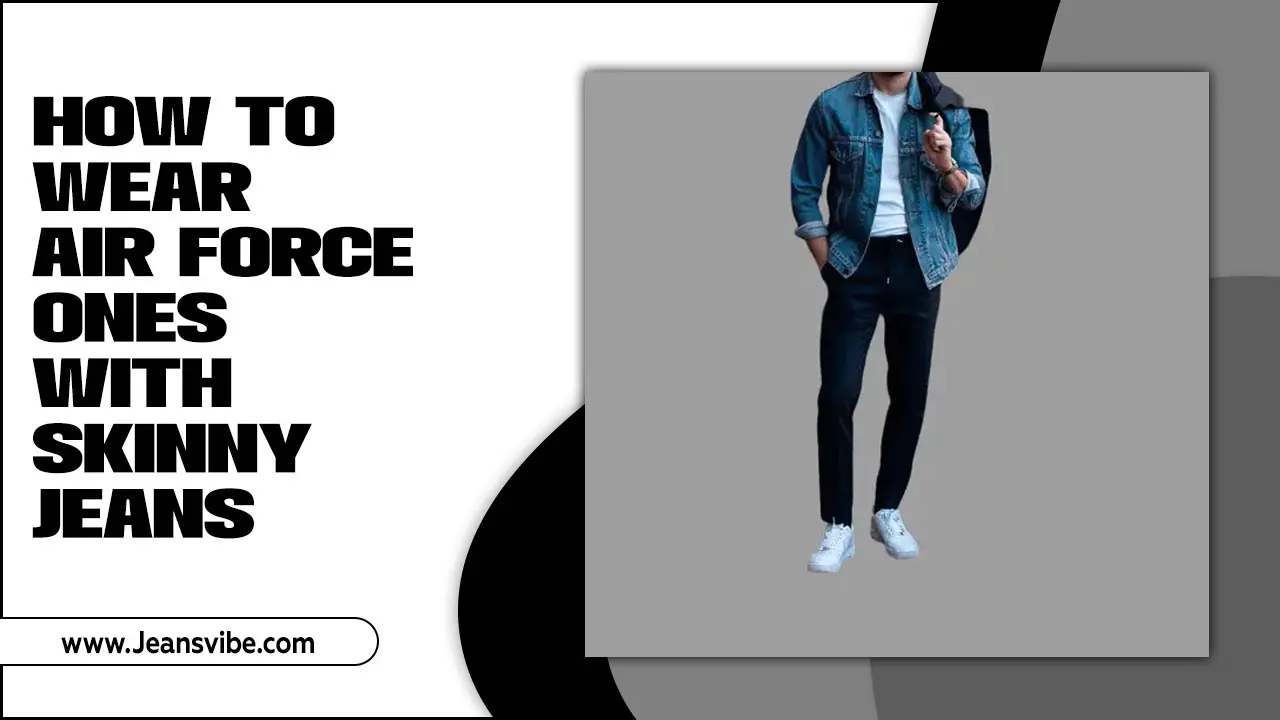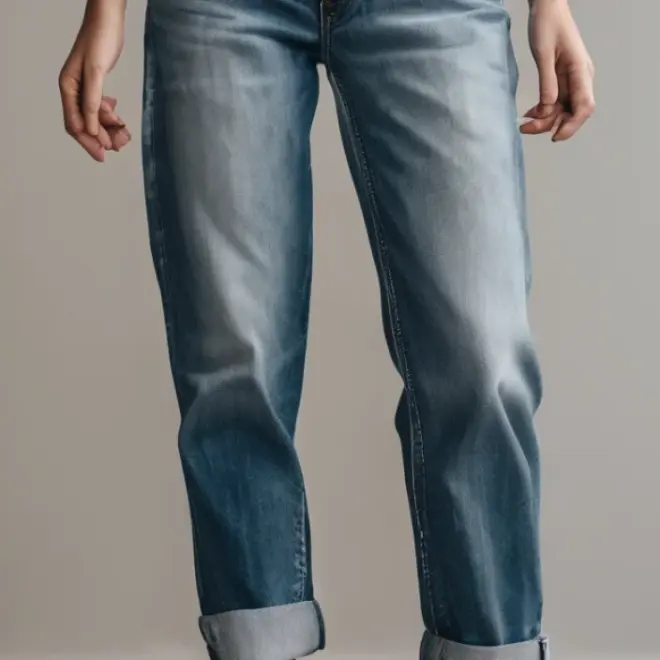Quick Summary: Learn how to hem your wide-leg jeans using a genius vinegar method to achieve a perfect length without sewing. This simple technique ensures your favorite jeans fit just right, saving you time and money.
How To Hem Wide Leg Jeans: Genius Vinegar Method
Leggings have long been a closet staple, perfect for lounging, working out, or layering. But what happens when your favorite pair gets a little too long? A common frustration is dealing with excess fabric bunching around your ankles, which can be uncomfortable and less than stylish. Thankfully, there’s a surprisingly simple way to fix this, and it involves a common household ingredient: vinegar. This method is perfect for anyone who wants to adjust the length of their wide-leg jeans without needing to sew a single stitch. We’ll walk you through each step, making it easy to get that perfect fit.
Wide-leg jeans are known for their relaxed silhouette, but an improperly hemmed pair can quickly lose their charm. Too long, and they can drag on the floor, get dirty easily, or even become a tripping hazard. Too short, and they can look awkward. The good news is you don’t need tailor skills to achieve a polished hem. This guide will show you how to use a clever vinegar trick to create a crisp, clean hemline that looks intentional. Get ready to revive your favorite denim!
Why This Vinegar Method Works
You might be wondering how vinegar, a common kitchen staple, can help hem your jeans. The magic lies in its acidic properties. When diluted and applied correctly, vinegar can help “set” fabric fibers, making them more pliable and susceptible to holding a new shape. For denim, especially cotton-based fabrics, this gentle treatment can allow the material to shrink slightly and permanently crease along the folded line you create. This process mimics a traditional hemming technique but without the need for needles and thread. It’s a fantastic solution for those seeking a no-sew hem that looks remarkably professional.
This method is particularly effective for wide-leg jeans because their inherent volume can sometimes make traditional hemming methods more challenging to get just right. The vinegar treatment helps to create a clean, straight line that complements the pant’s silhouette, ensuring the hem doesn’t look bulky or uneven.
Tools You’ll Need
Before you start, gather these simple items. You likely have most of them around the house already, making this an accessible DIY project for anyone.
- Wide-Leg Jeans: Your pair that needs hemming.
- White Vinegar: Standard household white vinegar is perfect.
- Water: For diluting the vinegar.
- Spray Bottle: To apply the vinegar solution evenly.
- Measuring Tape or Ruler: For accurate measurements.
- Fabric Scissors or Rotary Cutter: To trim excess fabric (optional, depending on how much you need to remove).
- Fabric Marker or Chalk: To mark your hemline.
- Iron: For pressing the hem.
- Ironing Board: For a stable ironing surface.
- A Flat Surface: For laying out your jeans.
- A Sink or Basin: For soaking (optional, but can enhance results).
Understanding Fabric Shrinkage and Vinegar
It’s important to understand how vinegar affects fabric. Acetic acid, the main component of vinegar, is a weak acid that can break down certain fibers under specific conditions. When diluted with water and applied to fabric, it can loosen the fibers. When heat is applied through ironing, these loosened fibers can then reshape and set. For denim, this process can lead to a subtle, controlled shrinkage and a crisper crease. It’s crucial to use a diluted solution to avoid damaging the fabric longer term or leaving a strong odor. For more information on fabric care and treatments, resources from textile research institutions can offer deeper insights into fiber behavior under various conditions.
The key is moderation. Too much concentrated vinegar or excessive heat could potentially weaken the denim fibers over time. However, for a single hemming application with a diluted solution, the effect is beneficial for creating a clean hemline. It’s always a good idea to test the solution on an inconspicuous area of the jeans first, like an inside seam, if you’re concerned about colorfastness or fabric reaction.
Step-by-Step Guide: The Vinegar Hem Method
Ready to get started? Follow these simple steps to achieve a perfectly hemmed pair of wide-leg jeans. This method is designed for beginners and ensures great results.
Step 1: Measure and Mark Your Desired Length
First, put on the shoes you plan to wear with your wide-leg jeans. This is crucial for ensuring the hem length is perfect. Stand in front of a mirror and determine where you want the hem to fall. Ideally, the hem should just graze the top of your shoe or slightly hover above the floor, depending on your preference. Once you’ve decided on the length, use your measuring tape to measure from the crotch seam down to where you want the hem to end. Mark this spot on the inside of one pant leg. Transfer this measurement to the other pant leg, ensuring it’s even.
Use a fabric marker or chalk to create a crisp line indicating where the new hem will sit. Double-check your measurements to ensure accuracy. For wide-leg jeans, it’s especially important for the hemline to be even across both legs and look consistent with the overall design of the pant.
Step 2: Fold and Pin the Hem
Now, fold the excess fabric of each pant leg upwards, aligning the raw edge of the fabric with the marked hemline you just created. You’ll be folding the fabric so that the inside of the pant leg is creating the new hem. The amount of fabric you fold up will depend on how much you need to shorten the jeans. Aim for a fold that is about 1 to 1.5 inches wide, which provides enough material for a sturdy and neat hem.
Use pins to secure the folded hem in place. Smooth out the fabric as you go to ensure there are no wrinkles or puckers. This careful pinning will guide your next steps and ensure the hem lies flat.
Step 3: Prepare the Vinegar Solution
In your spray bottle, mix one part white vinegar with two parts water. For example, if you’re using 1 cup of vinegar, add 2 cups of water. This dilution is generally safe for most denim and effective enough for the hemming process. Shake the bottle gently to combine the solution. This creates our “magic” hemming fluid.
If you are very concerned about the scent, you can add a few drops of your favorite essential oil to the mixture, though it’s not necessary for the hemming process itself. The water content aids in even saturation, and the vinegar provides the setting agent.
Step 4: Apply the Vinegar Solution
Carefully spray the vinegar and water solution along the folded edge of the hem on the inside of the pant leg. Ensure the fabric is evenly moistened but not soaking wet. You want the solution to penetrate the fabric, helping to soften the fibers for creasing. Work your way around the entire folded hem.
If you prefer a more thorough application or if the fabric seems particularly stiff, you can carefully remove the pins, dip the folded hem into a shallow sink or basin containing the diluted vinegar solution, allow it to soak for a minute, and then gently wring out any excess water. Afterward, refold the hem and re-pin it precisely.
Step 5: Iron and Set the Hem
Place the folded and pinned hem onto your ironing board. Set your iron to a medium-high heat setting, suitable for cotton or denim. Begin to iron the folded hem, pressing down firmly. The heat from the iron, combined with the vinegar solution, will help to reshape and set the fabric, creating a crisp, permanent crease where you’ve folded. Work slowly and methodically, pressing down each section of the hem for about 10-15 seconds.
Continue ironing the entire length of the hem, both on the inside and outside of the pant leg, to ensure a clean finish. You should start to see a distinct crease forming, effectively “hemming” your jeans.
Step 6: Check and Reinforce (Optional)
Once you’ve ironed the hem, allow it to cool completely. This is important because the fabric fibers continue to set as they cool. After cooling, carefully remove the pins and examine the hem. It should hold its shape well. If you feel the hem isn’t quite as crisp as you’d like, you can repeat the spraying and ironing process on that section.
For added durability and a more finished look, you can optionally add a few discreet stitches on the inside of the hem to secure it further. This is particularly recommended if you plan on wearing the jeans for very active purposes. However, for everyday wear, the vinegar method alone often provides a strong enough hold.
To get a better idea of how the fabric holds up with this method, consider looking at resources on fabric finishing techniques. For instance, the Utah State University Extension provides valuable information on fabric properties and care, which can deepen your understanding of why this process is effective.
Pros and Cons of the Vinegar Hem Method
Like any DIY technique, the vinegar hem method has its advantages and disadvantages. Understanding these can help you decide if it’s the right approach for your specific needs.
| Pros | Cons |
|---|---|
| No Sewing Required: Perfect for those who can’t sew or don’t have a machine. | Potential Vinegar Smell: Although it fades, a faint smell might linger until the first wash. |
| Quick and Easy: Can be completed in a short amount of time. | Not Permanent for All Fabrics: May not hold as permanently on very stretchy or synthetic blends as it does on 100% cotton denim. |
| Inexpensive: Uses common household items, saving money on tailoring. | Requires Careful Ironing: The quality of the hem depends on precise folding and firm ironing. |
| Creates a Crisp Finish: Results in a clean, defined hemline that looks intentional. | Removes Original Hem (if cropping): If you are cutting off a significant amount, you lose the original hem detail. |
| Suitable for Wide-Leg Styles: Works well with the silhouette of wide-leg jeans. | May Require Reinforcement: For heavy wear, additional stitching might be beneficial. |
When to Use the Vinegar Method vs. Other Hemming Techniques
The vinegar method is a fantastic choice for many situations, but it’s helpful to know when it shines and when another technique might be better suited. If you have extremely delicate fabrics or need a hem that can withstand significant stress, traditional sewing methods or professional tailoring might be more appropriate.
Here’s a quick comparison:
- No-Sew Hem Tape: This uses a heat-activated adhesive to bond the fabric. It’s quick, requires no liquid, and can be quite durable. However, it can sometimes create a slightly stiffer hem.
- Fabric Glue: Similar to hem tape, fabric glue offers a no-sew solution. It’s generally strong but can sometimes leave a visible seam if not applied perfectly.
- Traditional Sewing (Hand or Machine): This offers the most durable and professional finish. It allows for various hemming styles (like a blind hem) and can be easily reinforced. It requires sewing skills and tools.
- Vinegar Method: Ideal for cotton-based denim, it’s budget-friendly, requires minimal tools, and creates a natural-looking crease. It’s best for minor to moderate length adjustments and when a pristine, sewn look isn’t the absolute priority.
For wide-leg jeans where you’re aiming for a relaxed, casual look, the subtle crease created by the vinegar method often perfectly complements the style. It avoids the potentially stiff edge that hem tape can sometimes create.
Tips for Maintaining Your Hemmed Jeans
Once you’ve successfully hemmed your wide-leg jeans, you’ll want to keep them looking their best. Proper care will ensure your new hem lasts and your jeans remain a favorite in your wardrobe.
- Washing: Always wash your jeans inside out in cold water on a gentle cycle. This helps to preserve the color and prevent excessive wear on the fabric and the hem.
- Drying: Air drying is the best option for denim. Hang your jeans on a line or lay them flat. Avoid using a high-heat dryer, as this can cause shrinkage and potentially weaken the fibers where you’ve applied the vinegar treatment. If you must use a dryer, opt for a low heat setting and remove them while still slightly damp.
- Ironing: If your hem gets creased in a way you don’t like, or if you notice it loosening over time, you can re-iron it. Use a medium-high heat setting and press firmly, following the original crease.
- Storage: Fold your jeans neatly or hang them. Avoid cramming them into drawers or closets, which can cause unwanted creases.
- Avoid Bleach: Harsh bleaching agents can degrade denim fibers over time and may affect the effectiveness of the vinegar hemming treatment if you ever need to re-hem or repair the area.
Frequently Asked Questions (FAQ)
Q1: Will the vinegar smell stay on my jeans?
A: The smell of vinegar is usually very faint and dissipates completely after the jeans are fully dried and especially after the first wash. The water dilution helps significantly.
Q2: Can I use apple cider vinegar instead of white vinegar?
A: While white vinegar is recommended for its clarity and lack of color, apple cider vinegar can be used in a pinch. However, be cautious as it might have a slight tint that could affect very light-colored denim. Always test on an inconspicuous area first.
Q3: How much length can I realistically shorten with this method?
A: This method is best for shortening jeans by 1 to 3 inches. For very significant alterations, traditional sewing might yield a more robust and refined result.
Q4: What if my jeans are made of a synthetic blend?
A: While this method works best on 100% cotton denim, it can still be effective on blends with a high cotton content. For heavily synthetic fabrics (like stretch denim with 20%+ spandex), results may vary, and the hem might be less permanent.
Q5: Do I need to trim excess fabric before hemming?
A: Not necessarily. You are folding the excess fabric inward. If you are shortening the jeans by more than 2-3 inches and the folded band looks too bulky, you might consider trimming some of the excess fabric before hemming, leaving about 1.5 inches to fold.
Q6: How long does this hem typically last?
A: For regular wear and proper care, a vinegar-hemmed pair of jeans can last a long time. However, for very active use or frequent washing, the hem might loosen over many months or years, and re-ironing might be needed.
Q7: Can this method be used on other types of pants?
A: Yes, this method can work on other cotton-based pant fabrics like chinos or linen blends. Always test on a scrap piece or an inside seam first to ensure the fabric reacts well to the vinegar and heat.
Conclusion
Achieving perfectly hemmed wide-leg jeans no longer requires a sewing machine or a trip to the tailor. The genius vinegar method offers an accessible, budget-friendly, and surprisingly effective way to adjust the length of your favorite denim. By following these straightforward steps, you can confidently tackle this common clothing alteration, enjoying a custom fit that elevates your style. Remember to measure carefully, fold precisely, and press firmly with your iron. With proper care, your newly hemmed jeans will be a staple in your wardrobe for seasons to come. So, grab your jeans, a bottle of white vinegar, and give this clever









